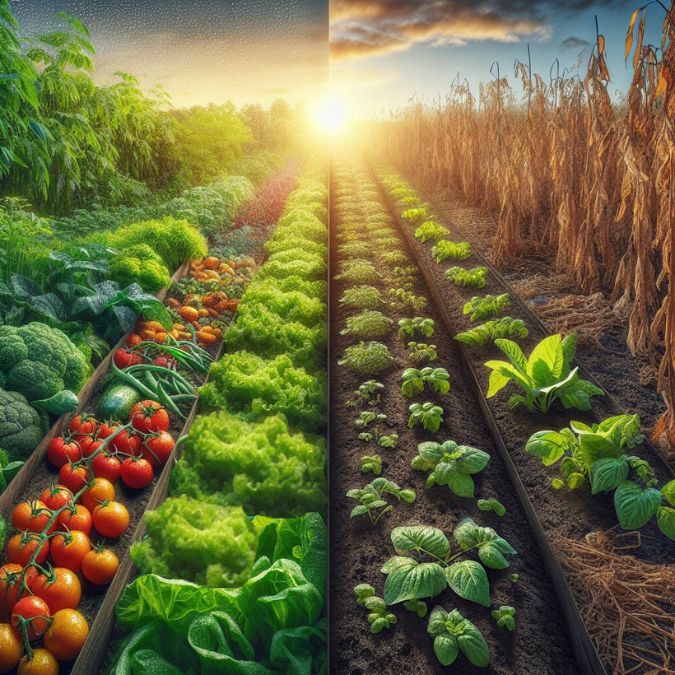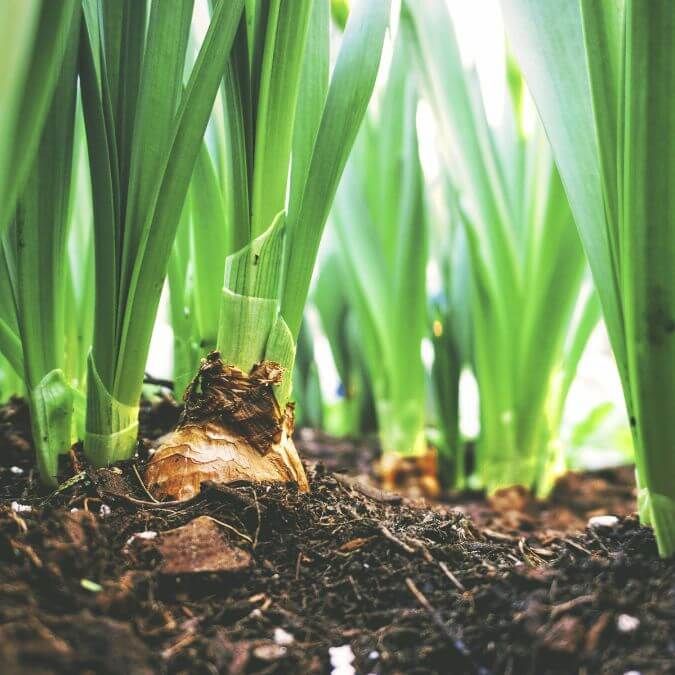
When you think about what makes a garden thrive, you might picture sunlight, water, and good soil. But there’s a hidden hero working beneath the surface: mycorrhizal fungi. These tiny organisms form partnerships with plant roots, creating a network that turns a regular garden into a survival garden, resilient and rich in nutrients.
Key Takeaways
Mycorrhizal fungi form a symbiotic relationship with plants, enhancing nutrient uptake and soil health.
Integrating mycorrhizal fungi into your garden can boost plant health and increase crop yields sustainably.
Understanding soil conditions and the right application methods is crucial for successful mycorrhizal inoculation.
Mycorrhizal fungi can help plants become more resistant to pests, diseases, and harsh environmental conditions.
Learning more about mycorrhizal fungi is essential for any gardener looking to create a sustainable and resilient garden.
What Are Mycorrhizal Fungi?
Imagine if plants could reach out and connect with other organisms to help them gather food. That’s exactly what happens with mycorrhizal fungi. These fungi live in the soil and attach to plant roots, forming a partnership called a mycorrhizal association. The fungi extend the reach of the roots, helping plants absorb more water and nutrients like phosphorus and nitrogen, which are essential for growth.
Most importantly, these fungi also help plants fight off diseases and pests. Think of them as the bodyguards of the plant world, offering protection in exchange for some of the sugars that plants produce through photosynthesis.
Because of these benefits, mycorrhizal fungi are a key component in survival gardens, which are designed to be self-sustaining and productive, even in challenging conditions.
Why They’re Essential for Survival Gardens
Survival gardens aren’t just about growing food; they’re about creating ecosystems that can withstand and thrive in the face of adversity. Here’s why mycorrhizal fungi are indispensable:
Enhanced Nutrient Uptake: They make it easier for plants to get the nutrients they need from the soil, which is especially important in poor-quality soils.
Drought Resistance: The extended network of fungal hyphae can access water from deeper within the soil, helping plants survive dry spells.
Disease Suppression: Mycorrhizal fungi can outcompete or inhibit harmful soil pathogens, reducing the need for chemical pesticides.
Soil Structure: The web of hyphae improves soil aeration and aggregation, which benefits root growth and water retention.
Carbon Sequestration: By partnering with plants, mycorrhizal fungi help lock carbon away in the soil, contributing to a healthier environment.
Therefore, incorporating mycorrhizal fungi into your garden isn’t just a good practice; it’s a step towards building a resilient food system that can face the challenges of climate change and resource scarcity.
Boosting Plant Health with Mycorrhizal Partners
Adding mycorrhizal fungi to your garden is like giving your plants a team of personal assistants. These fungi work tirelessly to ensure that plants have everything they need to grow strong and healthy. And when plants are healthy, they produce more – which means more food on your table.
But it’s not just about quantity; it’s about quality too. Plants with mycorrhizal partners tend to be more nutrient-dense, so you’re getting more vitamins and minerals with every bite.
Selecting the Right Mycorrhizal Fungi
Before you start, know that not all mycorrhizal fungi are the same. There are two main types: endomycorrhizae and ectomycorrhizae. Most garden vegetables, fruits, and flowers form relationships with endomycorrhizae, while trees and shrubs often partner with ectomycorrhizae.
To get the best results, you’ll want to choose a mycorrhizal product that’s tailored to your garden’s specific needs. Look for products that list the types of fungi they contain and match them to the plants you’re growing.
Here’s a simple guideline to follow:
If you’re growing leafy greens, tomatoes, or strawberries, seek out endomycorrhizal fungi.
For planting trees or shrubs, look for ectomycorrhizal fungi.
Some products contain a blend of both, which can be great for mixed gardens.
Remember, the goal is to create a thriving ecosystem below the soil that supports a vibrant and productive garden above. In the next section, we’ll dive into how to properly introduce these powerful fungi into your garden’s soil.
Step-by-Step: Incorporating Mycorrhizae Into Your Soil

So, you’ve selected the right type of mycorrhizal fungi for your garden. Now, it’s time to get your hands dirty and introduce these beneficial microbes into the soil. Here’s a step-by-step guide to ensure you do it right:
Soil Assessment: Starting Point for Mycorrhizal Integration
First things first, you need to understand the current state of your soil. This means checking for texture, nutrient levels, and existing microbial activity. A simple soil test kit from your local garden store can help you determine if your soil is ready for mycorrhizal inoculation. If your soil is heavily compacted or has high levels of chemical fertilizers, it might be hostile to mycorrhizal fungi. In such cases, you’ll need to amend the soil before proceeding.
Here’s what to look for:
Organic matter content: Mycorrhizal fungi thrive in soil rich in organic matter.
pH levels: Most mycorrhizal fungi prefer a pH between 5.5 and 7.0.
Existing microbial life: Healthy soil should already have some microbial activity.
Once your soil passes the test, you’re ready for inoculation.
Inoculation Process: When and How to Apply Mycorrhizae
Inoculating your garden with mycorrhizal fungi is best done at planting time. This way, the fungi can colonize the roots right from the start. You can mix the mycorrhizal inoculant with the soil in the planting hole, or sprinkle it directly on the roots of your plants before covering them with soil.
Here’s how to apply the mycorrhizal fungi for maximum effectiveness:
Mix the inoculant with water if it’s a powder form, or use it directly if it’s granular.
Ensure direct contact between the inoculant and the plant roots.
Water the plants after planting to help the fungi establish.
Remember, mycorrhizal fungi need a living root to survive, so don’t apply them to bare soil without planting. And don’t worry about applying too much – these fungi are natural and won’t harm your plants.
Maximize Crop Yields: The Mycorrhizal Advantage

Now that your garden is inoculated with mycorrhizal fungi, you can look forward to stronger, healthier plants and, most importantly, higher yields. Mycorrhizal fungi extend the root system, which means your plants can gather more nutrients and water than they could on their own. This leads to more robust growth and a bountiful harvest.
But the benefits don’t stop at yield. Mycorrhizal fungi also help to build and maintain soil structure, which is vital for soil health and plant growth. The fungal hyphae bind soil particles together, creating air pockets that allow roots to breathe and water to penetrate the soil more effectively.
Nutrient Uptake and Water Efficiency
One of the most significant advantages of mycorrhizal fungi is their ability to enhance nutrient uptake. This is especially true for phosphorus, a critical nutrient that is often locked away in forms plants can’t access. Mycorrhizal fungi release enzymes that free up phosphorus, along with other nutrients, making them available to the plant.
Because of this, you can reduce the amount of fertilizer you use, saving money and preventing nutrient runoff into local waterways. Here’s what you’ll notice:
Greener leaves, which indicate better nitrogen absorption.
More flowers and fruits, thanks to improved phosphorus uptake.
Better drought resistance, as mycorrhizal plants can access water from deeper in the soil.
Besides that, these fungi can help your plants cope with water stress. The extended mycelium network acts like a sponge, holding onto water and releasing it to the plant roots when needed. This means you’ll need to water less frequently, which is a win for both the environment and your water bill.
Enhanced Resistance to Pests and Disease
Mycorrhizal fungi don’t just feed plants; they also protect them. By forming a barrier around the root system, they can prevent harmful pathogens from invading. This natural defense mechanism reduces the need for chemical pesticides, leading to a healthier garden and ecosystem.
Here are some of the protective benefits you’ll see:
Less root rot and other soil-borne diseases.
Reduced damage from nematodes and other root-eating pests.
Increased resilience to environmental stresses like extreme temperatures and pollution.
Therefore, by embracing mycorrhizal fungi, you’re not just growing plants; you’re cultivating a garden that can withstand the tests of nature and time. And remember, the healthier your garden, the more it gives back to you, the environment, and the community.
In the final part of this article, we’ll cover some frequently asked questions about mycorrhizal fungi and provide additional insights into how you can make the most of these remarkable organisms in your survival garden.
Frequently Asked Questions
Can mycorrhizal fungi be used with all types of plants?
While mycorrhizal fungi are beneficial to a wide variety of plants, not all plants require or benefit from these symbiotic relationships. Most vegetables, fruits, and flowers do form mycorrhizal associations, but there are exceptions like brassicas (broccoli, cauliflower, and cabbage) and other non-mycorrhizal plants such as beets and spinach. It’s always a good idea to check which plants in your garden will benefit the most from mycorrhizal inoculation.
How often do I need to apply mycorrhizal fungi to my garden?
Generally, you only need to apply mycorrhizal fungi once. These fungi are self-sustaining once they establish a connection with plant roots. They will continue to live in the soil and colonize new plants as long as the soil environment remains healthy and undisturbed by practices like excessive tilling or the use of high-phosphate fertilizers.
Are there any risks of using mycorrhizal fungi in organic gardens?
Mycorrhizal fungi are a natural part of the soil ecosystem and are safe to use in organic gardens. In fact, they can enhance organic gardening by reducing the need for chemical inputs. However, it’s important to source your mycorrhizal inoculants from reputable suppliers to ensure they are free from contaminants and are appropriate for organic use.
How do mycorrhizal fungi improve soil vitality?
Mycorrhizal fungi play a crucial role in soil health by improving soil structure, increasing nutrient availability, and enhancing the soil’s ability to retain water. Their hyphae create a network that binds soil particles together, which promotes aeration and water infiltration. This not only benefits the plants but also the myriad of microorganisms that contribute to a vibrant soil ecosystem.
Can mycorrhizal fungi help my garden during a drought?
Yes, mycorrhizal fungi can be incredibly helpful during drought conditions. Their extensive hyphal networks can reach water and nutrients that plant roots alone cannot, providing plants with a lifeline in times of water scarcity. This symbiotic relationship can reduce the need for watering and help plants survive and even thrive during dry periods.
In conclusion, mycorrhizal fungi are a gardener’s best friend, especially when it comes to creating a survival garden. By enhancing nutrient uptake, improving soil structure, and providing a natural defense against pests and diseases, mycorrhizal fungi empower your garden to be more productive, resilient, and sustainable. Whether you’re a seasoned gardener or just starting out, understanding and utilizing mycorrhizal fungi can make a significant difference in your garden’s health and yield.
Besides that, learning more about these fascinating organisms is not only interesting but also practical. They are a cornerstone of sustainable agriculture and a key to unlocking the full potential of your garden. So, take the time to learn more about mycorrhizal fungi and consider incorporating them into your gardening practices. It’s an investment that pays off in the health and abundance of your garden ecosystem.
Remember, every step you take towards understanding and working with nature’s intricate systems not only benefits your garden but also contributes to a healthier planet. So why not start today? Explore the world of mycorrhizal fungi and take your survival garden to the next level. Learn more about how these incredible organisms can transform your gardening experience.







Leave a Reply